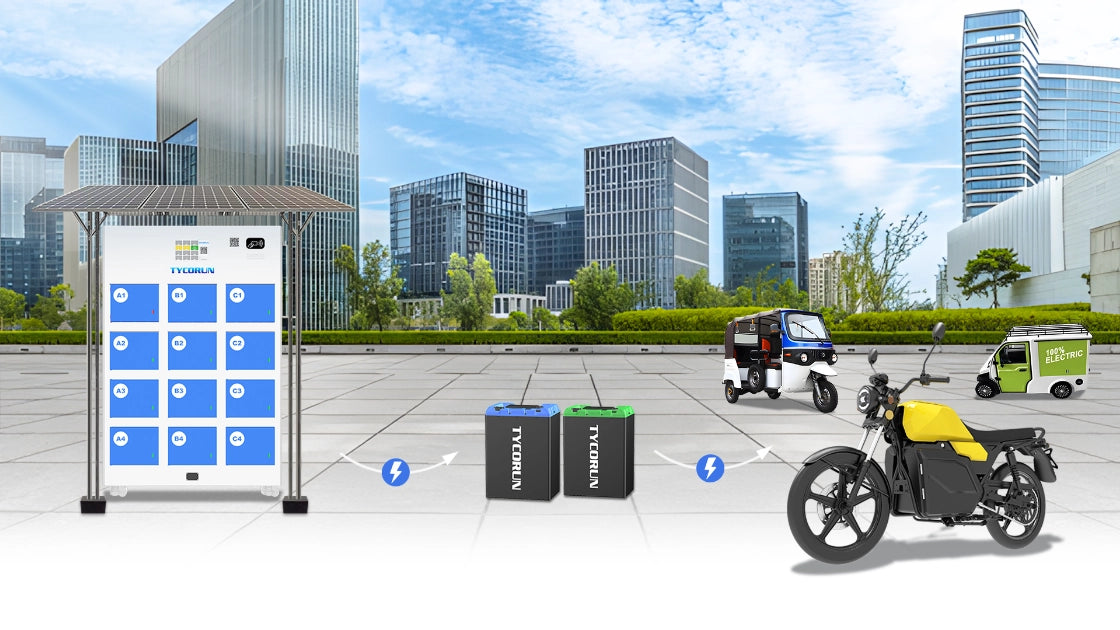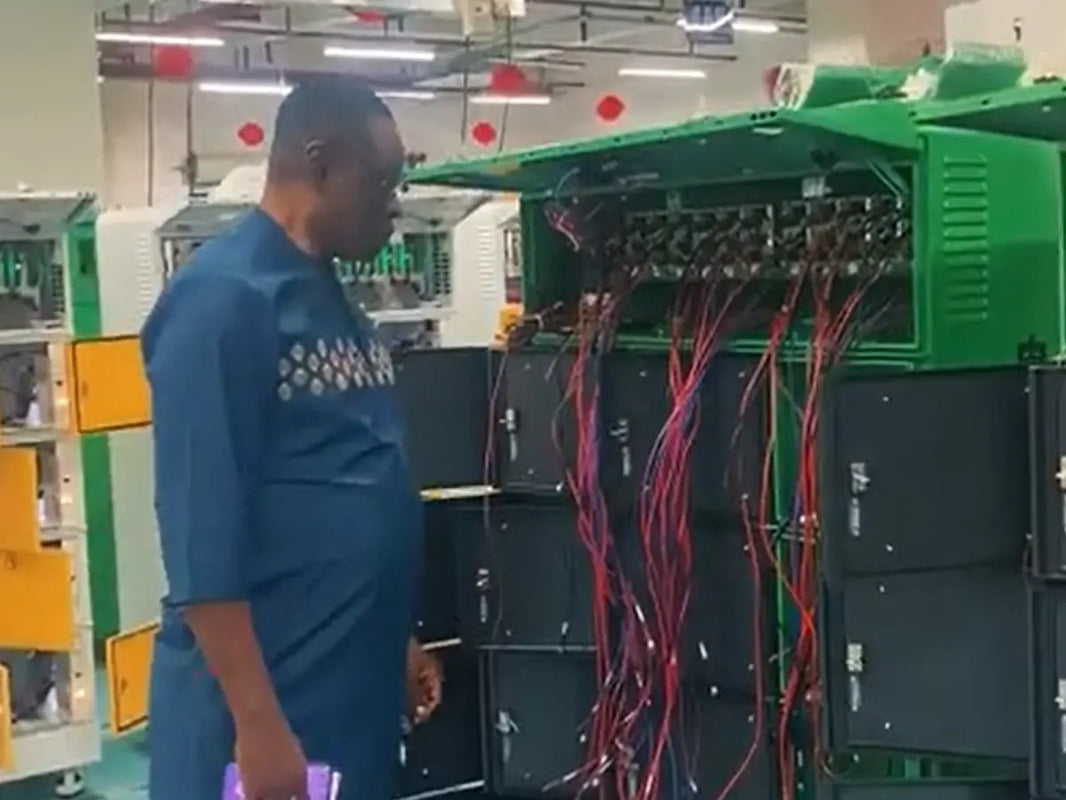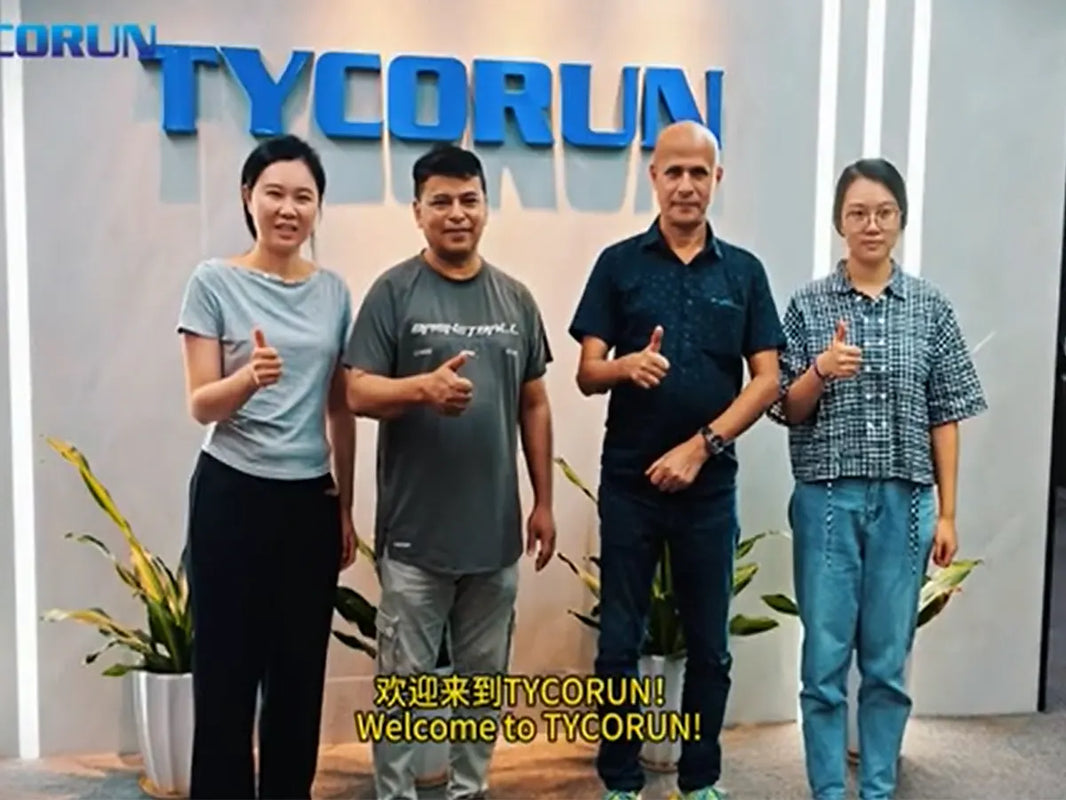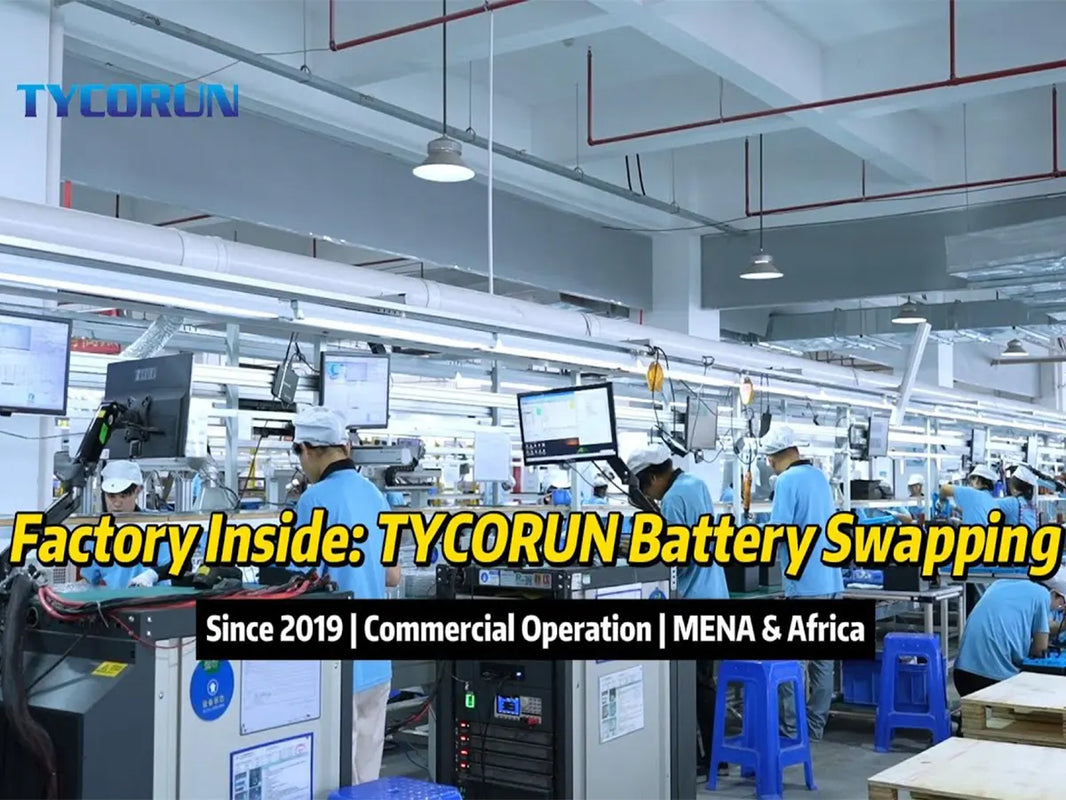
|
Main content: |
The electronic control technology of electric vehicles is mainly composed of sensors, electronic control units (ECUs), drivers and control program software. Although there are certain differences in the electronic control system in different types of electric vehicles, in general, it generally includes energy management control, chassis electronic control, body electronic safety control and vehicle control technology.
The energy management system is one of the core components of new energy vehicles such as pure electric vehicles, hybrid electric vehicles and fuel cell vehicles. It is mainly composed of three parts: power distribution, power limitation and charging control. Its working principle can be simply summarized as: the electronic control unit analyzes and processes the data according to the battery status information and other related information collected by the data acquisition circuit, and forms the final instructions and information to send to the corresponding functional modules.
The functions of the energy management system include:
①Maintain the work of all battery components of electric vehicles and keep them in the best condition;
② Collect the operation data of each subsystem of the vehicle for monitoring and diagnosis;
③Control the charging method and provide the display of remaining energy.
1.Energy management and control of pure electric vehicles

In a pure electric vehicle, the power battery pack serves as the only power source to drive the motor to rotate to make the vehicle run. When the capacity of the power battery pack is low, it can be charged by the on-board or external charger to supplement energy. Pure electric vehicles also have the function of braking energy regeneration control. The flow of energy in a pure electric vehicle is shown in Figure 1.

Figure 1 Schematic diagram of energy flow in pure electric vehicles
2.Energy management control of hybrid electric vehicles

Hybrid electric vehicles can give full play to the advantages of internal combustion engine vehicles and electric vehicles by combining the engine, electric motor and energy storage device (battery), etc., and perform good matching and optimal control of them, thereby avoiding their respective shortcomings. During the driving process of the hybrid vehicle, the function of its control strategy is to use the hybrid vehicle according to the performance characteristics of the powertrain components and the driving conditions of the vehicle under the premise of meeting the basic performance requirements of the vehicle driving. The energy-saving mechanism of the design gives full play to the energy-saving potential of the design scheme, so that the vehicle can achieve the target performance in terms of fuel homogeneity and emission. The energy management control strategy is the technical core and design difficulty of the research and development of the hybrid electric vehicle, and it is also the key to the success or failure of the research and development of the hybrid electric vehicle.
When determining the control strategy of the hybrid powertrain, first of all, it is necessary to clearly put forward the goal to be achieved by the control strategy (that is, the control goal), and then select the appropriate control method based on the control goal and the analysis and comparison of various control methods.
The control objectives of the hybrid powertrain mainly include the goal of optimal fuel consumption and emissions of the vehicle and the goal of minimal battery power consumption. Taking the best fuel consumption and emissions of the whole vehicle as the control goal can give full play to the advantages of HEVs. The control strategy controls the operation of the vehicle and also takes measures to maintain the state of charge of the battery, so as to improve the cycle life of the battery, so as to ensure sufficient The driving range is also the development trend of hybrid vehicle products. The control goal of the hybrid powertrain is to adjust the power output according to the driver's intention, aiming at the best fuel economy performance and emission performance of the whole vehicle.
Hybrid powertrain control methods usually include logic threshold control, dynamic adaptive control, logic fuzzy control and neural network control. Among them, the logic threshold control method is fast and simple, has strong practicability, and is widely used, while the other three control methods require a large amount of data collection and calculation, especially to collect a large amount of engine operating data in real time to calculate the optimal engine performance. The fuel consumption point and the optimal emission point, and the real-time tracking of the value changes during operation make the software and hardware of the control system too complicated. In addition, the improvement effect of the last three control methods on the target depends on the accuracy of the engine dynamic model and the accuracy of real-time and rapid detection of operating data. The deviation of the accuracy may lead to a sharp deterioration of the target effect. Therefore, the hybrid powertrain control system should adopt the logic threshold control method at present.
When the parallel hybrid power system adopts the logic threshold control method, there are two specific control strategies, namely, the control strategy of limiting the engine working range and the control strategy of weighted adjusting the engine working range. Both of these strategies control the engine and battery to operate within a high-efficiency range and provide the required torque by setting thresholds. As a load regulating device, the motor participates in driving when the vehicle needs a large torque output, and absorbs the residual torque of the engine to generate electricity when the vehicle only needs a small torque output, and maintains the state of charge of the battery pack at a high level. within the efficiency range.
When adopting the logic threshold control method, the series hybrid system mainly adopts the control strategy of limiting the working range of the engine. By setting the threshold value, the working range of the engine and the battery is limited to the high-efficiency range, and the motor is provided independently or jointly. Electric power. As an electric power adjustment device, the battery outputs electric power when the vehicle is in a condition with high power demand such as acceleration or climbing; when the power requirement of the vehicle is not high, it can use the surplus power of the engine to charge to maintain the state of charge within a certain range .
For the hybrid hybrid system (the drive device adopts a planetary gear mechanism), the logic threshold control method is mainly adopted to limit the working range of the engine. According to the instantaneous state parameters of the power source (such as speed), battery parameters ( SOC) and vehicle parameters (such as vehicle speed) to set the threshold value to ensure that the power output of the power source meets the power demand of the vehicle, so as to realize the driver's intention.
On the basis of the research results of the control strategy, by studying the requirements of the whole vehicle for the control system, the scheme design of the control system is completed, mainly including the hardware design and software design of the control system.
1) Functional requirements of the hardware structure
The design of the hardware structure scheme is based on the requirements of the vehicle for the hybrid powertrain control system. The requirements of the vehicle for the control system mainly include the following aspects.
(1) The hybrid powertrain must output the driving or braking torque according to the driver's intention. When the driver depresses the accelerator or brake pedal, the hybrid powertrain outputs a certain driving torque or regenerative braking torque. The greater the pedal opening, the greater the torque output from the hybrid powertrain. Therefore, the control system needs to be able to receive the pedal opening signal and convert it into a torque output request for the hybrid powertrain.
(2) The power output of each power element in the hybrid powertrain must be controllable. The power element needs to perform corresponding power output or state transition according to the control command. Therefore, the control system should include the control unit of the power element to realize the functions of receiving the control command signal, adjusting the power output and state conversion of the power element.
(3) The control system of the hybrid powertrain must calculate the working state and power output requirements of each force element according to the pedal opening signal and the feedback signal of the power element, and output control commands to the control unit of the power element.
2) Structural design of control system software
Based on the hardware structure scheme of the control system, the functional requirements of the control software are put forward. The functional requirements of the control software are different for the hybrid systems of different modes.
(1) Functional requirements of parallel hybrid system control software
① Convert the pedal opening signal into the torque output request for the hybrid powertrain.
The control software needs to determine the relationship between the pedal opening and the torque output requirement, and also determines the distribution ratio of the regenerative braking torque to the mechanical braking torque and the distribution ratio of the front and rear wheel braking torque in the braking condition.
② Determine the working state of the engine.
The control software needs to decide whether the engine is running or stopped according to the requirements of the driving conditions and the efficiency of the engine in different working areas, with the goal of the engine working in the high-efficiency area.
③ Determine the torque output of the engine.
The control software needs to adjust the engine according to the requirements of the driving conditions and the working state of the engine, so that it runs in the high efficiency range, so as to determine the torque output of the engine.
④ Determine the torque output of the motor.
The control software needs to adjust the torque output of the motor according to the requirements of the driving conditions and the torque output of the engine to meet the torque output requirements of the vehicle, thereby determining the torque output of the motor.
(2) Functional requirements of control software for series hybrid power system
① Convert the pedal opening signal into the torque output request for the hybrid powertrain.
This is the same as the software functional requirements of a parallel hybrid system.
② Determine the electric power input and torque output of the motor.
Since the series hybrid electric vehicle uses the electric motor as the only power output device, it is necessary to determine the relationship between the torque output requirement of the hybrid powertrain and the torque output of the electric motor, and determine the corresponding electric power input according to the torque output requirement of the electric motor. .
③ Determine the working state of the engine-generator set.
According to the electric power input requirements of the motor and the efficiency of the engine in different working intervals, the engine generator set is determined to be in the running or shutdown state with the goal of the engine working in the high-efficiency interval.
④ Determine the torque output of the engine generator set.
According to the electric power input requirements of the electric motor and the working state of the engine-generator set, the engine is adjusted to operate in a high-efficiency range, thereby determining the torque output of the engine.
At present, the hybrid electric vehicles researched and developed in various countries in the world have different structural forms. According to the configuration and combination of their drive systems, they can be divided into three types of power combinations: series, parallel and hybrid.
(1) Tandem drive system
The energy flow in a series hybrid drive is shown in Figure 2. A series hybrid vehicle usually integrates an engine and a generator into one, the engine drives the generator to generate electricity, and the generated electrical energy is directly transmitted to the motor through the controller, and the motor generates torque to drive the vehicle. The battery actually plays the role of balancing the output power of the engine and the input power of the motor, that is, when the power generated by the generator is greater than the power required by the motor, the controller will use the surplus power of the generator to charge the battery and convert it to The electrical energy is stored; when the power output from the generator is lower than that required by the electric motor, the battery provides additional electrical energy to the electric motor. A series hybrid system uses a smaller engine to operate in the most efficient rev range, thereby maximizing fuel economy and reducing emissions.

Figure 2 Schematic diagram of energy flow in series hybrid drive mode
Since the engine of a series hybrid vehicle is not directly related to the driving conditions of the vehicle, the main goal of its control strategy is to make the engine work within the optimal efficiency range and emission range. Series hybrid vehicles have the following two basic control modes.
①Thermostat control mode.
When the state of charge (SC) of the battery drops to the set low threshold value, the engine starts and outputs a constant power at the minimum fuel consumption point or emission point. Part of the power is used to meet the driving requirements of the vehicle, and the other part of the power is The battery is charged; and when the SOC of the battery pack rises to the set high threshold value, the engine is turned off, and the battery pack provides energy for the electric motor to drive the wheels. In this mode, the battery pack must meet all the instantaneous power requirements, but the losses caused by excessive cycling of the battery pack may reduce the gain brought by the engine optimization, so this mode is more beneficial to the engine than to the battery. .
②Power tracking control mode.
This method mainly determines the on-off state and output power of the engine according to the SOC and load of the battery, so as to meet the power demand of the vehicle. When the engine power demand is less than the output power, adjust the engine output power to the minimum value: when the SOC is higher than the lower bound, and the total demand load of the car does not exceed the battery capacity but exceeds the maximum engine power, the engine output power is adjusted to the maximum value. The power of the engine follows the driving power of the wheels, which is similar to the operation of a conventional internal combustion engine car.
Comparing these two control modes, the engine in the thermostat control mode generally works near the optimal fuel consumption point, and the power-following engine generally works near the optimal economic working line. In comparison, the average working efficiency of the former engine is higher. However, the power-following control strategy has better comprehensive performance in terms of power and fuel economy. The above two control modes can be used in combination, and the purpose is to make full use of the high-efficiency area of the engine and battery to achieve the highest overall efficiency.
(2) Parallel drive system
The structure of the parallel hybrid drive system is shown in Figure 3, and the vehicle can be driven by the engine and the motor together or independently. If the motor is only used as an auxiliary drive, its power is relatively small. Compared with the series structure, the engine in the parallel hybrid system can directly drive the vehicle through the mechanical transmission mechanism, and its energy utilization rate is relatively high, and the fuel economy is higher than that of the series drive system. The parallel drive system is suitable for stable driving conditions on inter-city highways and highways. Since the operating conditions of the engine in the parallel drive system are affected by the driving conditions of the vehicle, it is not suitable for the environment where the driving conditions of the vehicle change frequently and greatly. In addition, compared with the series structure, the parallel drive system requires a speed change device and a power coupling device, and the transmission mechanism is more complicated.

Figure 3 Structure of the parallel hybrid drive system
The control strategy of the parallel hybrid vehicle usually makes the engine and motor output corresponding torque according to certain rules according to the SOC of the battery, the position of the accelerator or brake pedal, the speed of the vehicle and the average power of the driving wheel, so as to meet the needs of the vehicle for driving. torque requirements.
(3) Hybrid drive system
The hybrid drive system is a combination of series and parallel. Part of the power of the engine passes through the mechanical transmission mechanism
It is sent to the drive axle, and the other part drives the generator to generate electricity. The electric energy generated by the generator is sent to the motor or battery, and the driving torque generated by the motor is transmitted to the drive axle through the power coupling device. The control strategy of the hybrid drive system is: when the car is running at low speed, the drive system mainly works in series; when the car is running at high speed and stably, it mainly works in parallel. In the hybrid drive system, The work of the engine is not affected by the driving conditions of the car, and can work at the highest efficiency state or automatically shut down, so that the car can achieve low emissions and ultra-low fuel consumption at any time, and achieve good environmental protection and energy saving effects. This method can better meet the performance requirements of the car, but the control technology is complex, and the structural design and manufacturing requirements are high.
According to the different energy supply methods, the basic working modes of the parallel hybrid system can be divided into pure electric drive mode, pure engine drive mode, driving charging mode, hybrid drive mode, deceleration/braking energy feedback mode and idle/stop mode, etc. types. The operating modes corresponding to different stages in the driving cycle are shown in Figure 4.

Figure 4 Working modes corresponding to different stages of the driving cycle
(1) Pure electric drive mode.
When the state of charge (SOC) of the power battery is higher than the lower limit and the vehicle is in a light-load starting condition, the clutch between the engine and the transmission system is disengaged, the power of the engine is cut off and the engine is stopped, and the power battery provides the required starting conditions for the vehicle to start. energy and the electric motor drives the vehicle to run. If the engine is used as the power source to drive the car in this working condition (that is, when it is in the starting condition of a traditional internal combustion engine vehicle), due to the poor combustion of the engine at low speed, the thermal efficiency is low, which will cause the engine Emissions performance at this stage is poor and fuel consumption is high. However, when the power of the power battery is lower than the lower limit (that is, when SOC<SOClow), the engine must provide the power required for starting, and the vehicle working mode is also switched to the driving charging mode.
(2) Pure engine drive mode.
Under normal driving conditions, the power required by the vehicle to overcome the road resistance is small, and the engine is generally powered by the engine.
(3) Driving charging mode.
When the power of the power battery is relatively low, in addition to providing the engine to overcome the road resistance
In addition to the required power, additional power is also provided to drive the generator to generate electricity, which converts part of the mechanical energy into electrical energy and stores it in the power battery for use in other working conditions.
(4) Hybrid drive mode.
Under heavy load conditions such as accelerating or climbing, when the power required by the vehicle exceeds the economical fuel consumption of the engine, the power battery outputs energy to drive the electric motor to provide auxiliary power to the vehicle. When the SOC of the power battery is low, the electric motor no longer works, and the engine runs at full power to provide the maximum power output. At this time, the vehicle is in a pure engine working mode.
(5) Deceleration/braking energy feedback mode.
The vehicle usually has two working modes under the deceleration/braking condition, one is to slowly reduce the vehicle speed and recover most of the deceleration braking energy only through the anti-drag effect of the motor; the other mode is to use more urgent braking. When there is a demand for power, the speed of the vehicle is rapidly reduced by the combined action of the motor anti-drag and the mechanical braking system. Part of the braking energy is recovered by the motor and stored in the battery pack, and the other part is converted into heat energy through the friction of the mechanical braking system.
(6) Idle/stop mode.
There is no energy flow in the hybrid drive system in idle/stop mode, and the engine and electric motor are normally shut down. However, when the SOC of the power battery is relatively low, the engine needs to be started and run in the economic working range to charge the power battery for use when needed.















